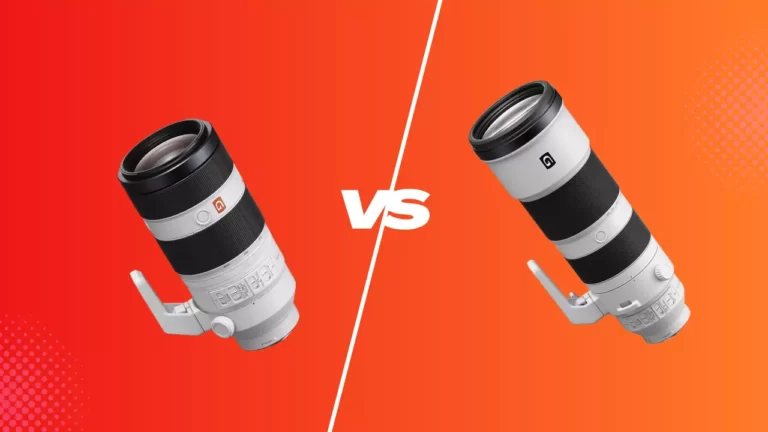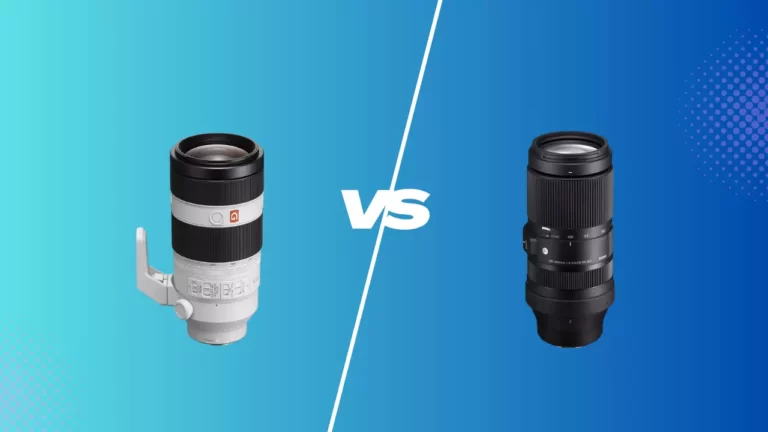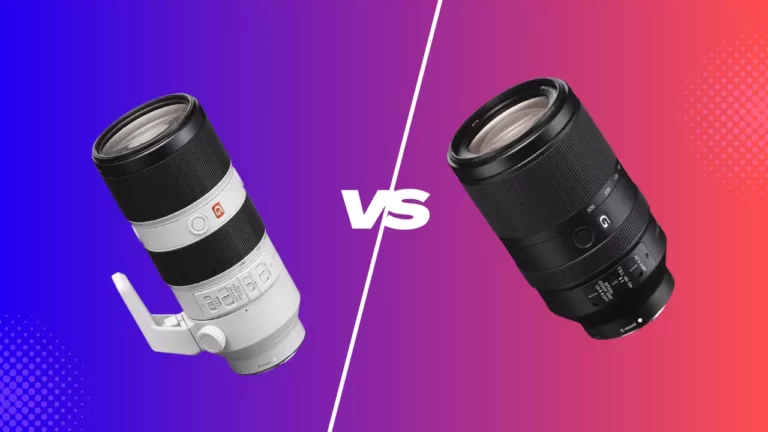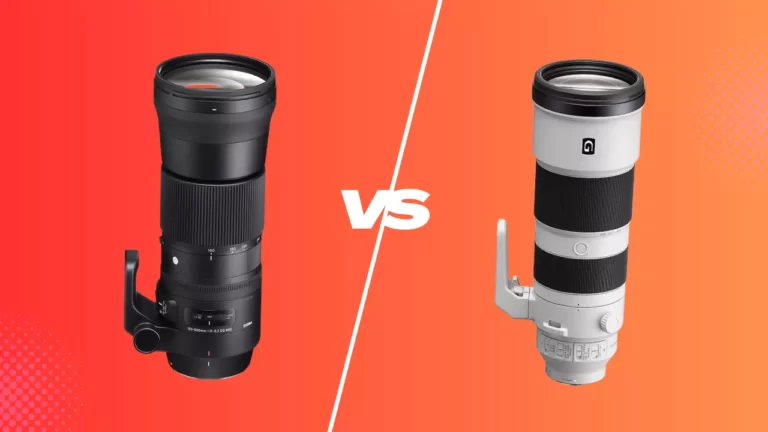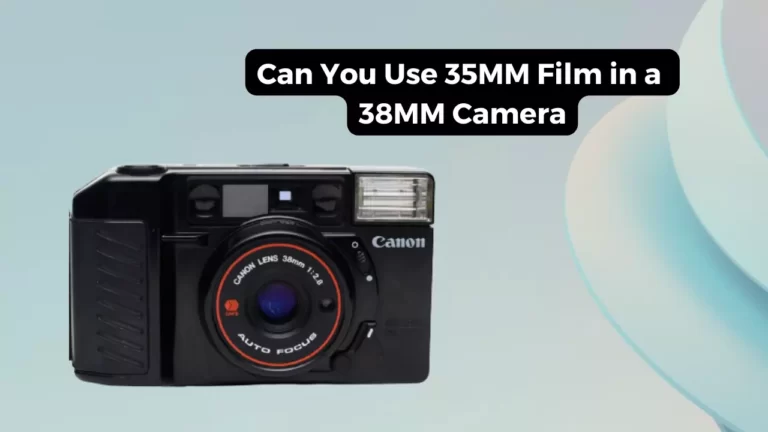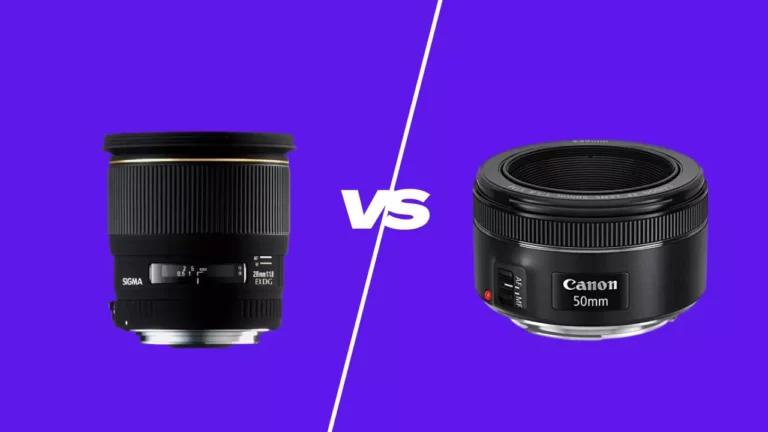Sigma 150 600 vs Tamron 150 600 – Which One is Better?

One thing about 150 600 lenses is that camera manufacturers are not making their own. This gives room for other manufacturers to specialize in the manufacturer of these lenses as third-party lenses. Tamron and Sigma have been the main manufacturers of 150 600 lenses and have been producing them for brands like Canon ad Nikon for a while.
Ideally, the best 150-600mm lenses should come with a versatile zoom range to allow you to get sufficiently close to your subjects without having to move toward them. Tamron and Sigma 150 600 lenses perform to these expectations. Tamron is however the expensive one of the two, but compensates it with performance, size, and weight. Sigma is comparatively heavier and cheaper. Both these lenses are customizable and upgrades are available.
This article aims to answer the question of which one is the better of the two lenses.
Sigma 150 600 vs Tamron 150 600
One thing about the 150 600 lenses is that they are third-party. This often means different handling and that some features such as optical image stabilization may not work optimally.
The advantage, however, is that they tend to be cheaper than the native alternatives. That is true for the Sigma and Tamron 150 600 lenses. Considering how expensive telephoto lenses tend to be, they are the better option.
Tamron and Sigma have manufactured 150-600mm lenses for many popular brands such as Nikon and Canon for quite some time.
The Canon and Nikon mirrorless users can incorporate these lenses by mounting them using adapters. You need not worry about functions such as autofocus not working well.
Comparison Table
| Features | Sigma 150 600 | Tamron 150 600 |
| Weight | 2860g | 2010g |
| Dimensions | 121 x 290mm | 108 x 260mm |
| Filter thread | 105mm | 95mm |
| Stabilizer | 4 stops | 4.5 stops |
| Maximum magnification | 0.2x | 0.16x |
| Minimum focus distance | 2.6m | 2.2m |
| Price | Check Price | Check Price |
Sigma 150 600 Overview
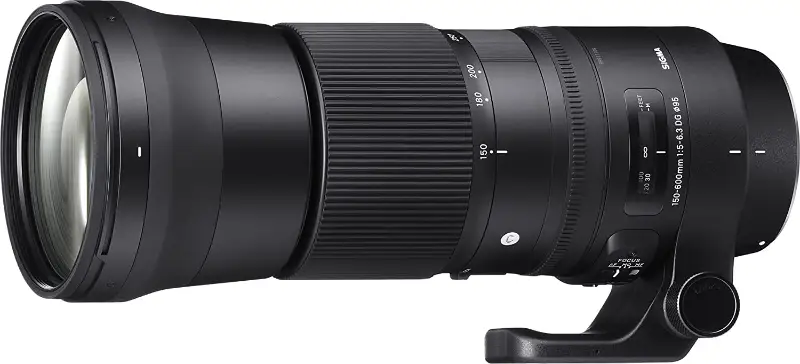
The Sigma 150-600mm lenses can be described as heavyweight and heavy-duty lenses. They are well-built to ensure speed and optimum performance. In appearance, the whole front section of the lens is larger than any other contemporary Sigma lens.
While this design is meant to boost image quality, it compromises on size and weight. The Sigma 150 600 becomes approximately a kilogram heavier than any other 150 600 lenses in the market.
Still, this lens is equipped with some advanced features such as the manual override focus option—you only need to twist the focus ring to swap to manual focusing.
The dual-mode stabilization comes with switchable static and panning modes and the zoom lock switch can be used on any focal length setting marked on the barrel. This lens allows customization of autofocus and stabilization as well as other firmware upgrades.
Pros
- It guarantees a great image quality
- This lens comes with a solid build with advanced features
- It has a weather-sealed body
- Distortions are reduced and the autofocus speed is faster
Cons
- It is comparatively big and heavy
Tamron 150 600 Overview
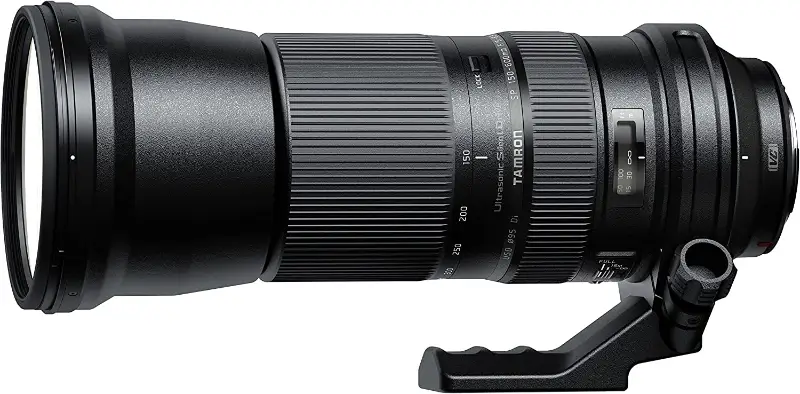
The Tamron 150 600 lens is a top performer. The generation 2 edition came upgraded in just about all aspects from the features to its handling and overall performance. The upgraded autofocus system works to deliver faster performance and is better able to track moving subjects.
Moreover, the redesigned vibration compensation system offers top-in-class 4.5 stop effectiveness and other two additional switchable modes. However, it is important to note that the optical stabilizer is only featured in the Canon and Nikon mount editions of the lens.
One outstanding feature that is lacking in its competitor is the new flex zoom lock that allows you to lock the zoom at any position rather than being limited to the settings for which a focal length is marked on the barrel. Just the Sigma, this lens also allows firmware upgrades and customization.
Pros
- It comes with improved autofocus and stabilization
- It offers good sharpness in the long section of the zoom range
- The lens comes with superior weather seals and a fluorine coating on the front element
- It is lighter in weight
Cons
- It lacks sharpness at shorter zoom settings
- There is no optical stabilization in the Sony-fit edition
Features Compared
Aperture and sharpness
Sigma is sharper at the wide end of the focal length range, with a wide-open aperture. Meanwhile, Tamron is 1/3 stop wider at some of the comparison focal lengths of 200 and 400mm. At 200mm, both lenses have similar sharpness wide open.
Image quality
When it comes to image quality, the comparison between the two is basically a tie as it does not place anyone above the other. Both of them guarantee excellent image quality.
Features
Their features are such a broad aspect. The Sigma lens has an optional dock with many advantages including custom switch programming. It is also extender compatible and its focus ring has modestly more rotation. This lens features a multi-position focal length lock.
On the other hand, Tamron has a smoother, larger, and easier-to-use manual focus ring. It features lower-profile switches as well. This lens will only lock at 150mm. furthermore, this lens focuses slightly closer and has a larger hood.
Price
Price is a major determinant and places the two lenses in different categories. Tamron lens is on the expensive side given all its advanced features and build. Sigma is on the cheaper side.
Final Verdict
It is no doubt that both the Sigma and Tamron 150 600 lenses offer superb performance. But when forced to choose one, the Tamron models take the lead. The Tamron 150 600 lens is on the expensive side but for a good reason.
Its entire build is superior complete with a fluorine coating on the front element. Moreover, it offers a 0.6m shorter minimum focus distance and an 18f smaller aperture at the maximum focal length.
Tamron lenses come with improved autofocus and stabilization features and customization is available so you can tailor the lens to fit your needs.
FAQs
Is the Tamron 150 600 sharp?
Generally, the Tamron 150 600 lens is sharpest at f8. If you shoot with this lens wide open, it is not the sharpest lens there is, but it is still good.
How many versions of Sigma 150 600 are there?
There are two versions of the Sigma 150 600. Tamron may have pioneered with it comes to the production of the 150 600 lenses, but Sigma quickly followed suit by releasing two versions of lenses with the same focal length and aperture ranges.
Conclusion
Generally, for the subjects that you cannot easily get close to such as wildlife or aircraft, 150-600mm lenses are recommended. They give high-quality zooms and provide a broad range of telephoto perspectives.
Tamron and Sigma are direct competitors and share many features, which is why it is relatively hard to choose one. Hopefully, the comparative review above has helped shed some light on the right lens for you.
You Can Also Read:
- Nikon 200 500 vs Sigma 150 600
- Sigma 150 600 vs Sony 200 600
- Tamron 150 600 vs Nikon 200 500
- Sony 100-400 vs Sigma 100-400
- Sony 70-200 vs 70-300
- Canon R5 Mark ii (Release Date, Price & Specs) - December 20, 2023
- Sony 100 400 vs 200 600: Which Telephoto Lens is Right? - December 15, 2023
- Sony A1 II Camera (Release Date, Price & Specs) - November 30, 2023

